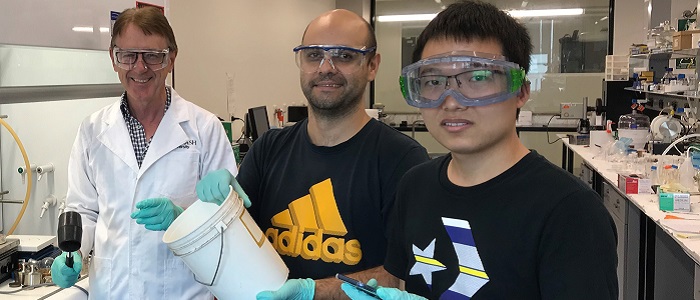News
3D printing bone tissue
Jun 28 2022
Researchers from the ARC Centre of Excellence for Electromaterials Science, based at Monash University, have recently published a paper on an ionic liquid-derived gel membrane for safe, flexible and wearable supercapacitors. This paper was published in Advanced Energy Materials and highlighted in Nature Reviews Materials.

Supercapacitors are unique energy storage devices, unlike batteries they can be charged in seconds and can be built with cheap electrode materials. The best example is porous carbon, which can be obtained from a vast range of sources, including biomaterials. These devices are usually employed in fast charge and discharge situations and find a wide application in electronics, electrical vehicles and potentially wearables and robotics.
Traditional supercapacitors are assembled with flammable organic electrolytes, capable to achieve operating voltages up to 2.5-3.0 V. This liquid electrolyte limits application to temperatures below 50 ⁰C and more importantly, is not suitable for flexible devices since they can leak, exposing serious safety concerns. To overcome this thermal stability issue, ionic liquids emerge as an excellent alternative since they are non-flammable and are stable even at temperatures exceeding 200 ⁰C. However, the leaking problem remained to be solved.
To tackle this issue, the ionic liquid group at Monash University led by Prof Doug MacFarlane devised a novel electrolyte based on a mixture of an ionic liquid with a polymer to form an ionogel. Research Fellow Tiago Mendes and PhD student Xiaomin Zhang created ionogels that were supported on commercial porous separators through a simple impregnation process. This easy-to-use methodology allowed them to build thin, flexible supercapacitor devices with outstanding performance, where even after 10,000 charge-discharge cycles, the device could still deliver 97% of its initial energy, proving the reliability of both methodology and electrolyte material. Dr Mendes explained that the method could easily be implemented as a part of a roll-to-roll high speed manufacturing process, lowering the cost of traditional device manufacture considerably. Their supported ionic liquid gel membrane article was recently published in the journal Advanced Energy Materials and was also highlighted in the prestigious Nature Reviews Materials.













